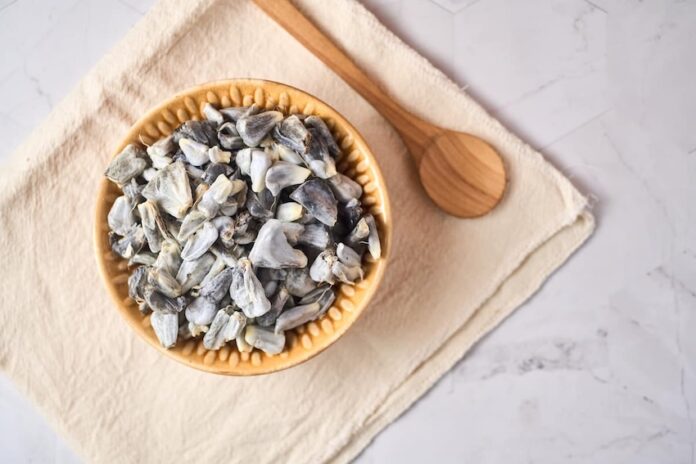I’ve seriously considered renaming this series to “Don’t judge my ingredient by its suspiciously odd appearance.”
Today, I want to introduce you to huitlacoche, often referred to as the Mexican truffle. It has a unique flavor that I’m sure I won’t be able to describe perfectly. Although huitlacoche has been around as long as maize, its popularity as a food source is a more recent development.
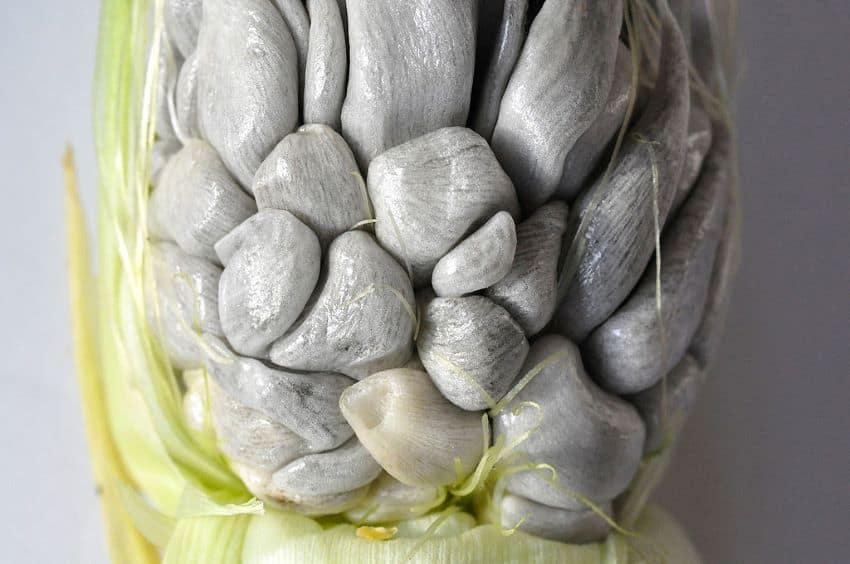
Cuitla-what-che?
Cuitlacoche, also known as huitlacoche, is a parasitic fungus that exclusively grows on maize plants, affecting their corn kernels, stalks and leaves. Called corn smut in English, it typically appears during the rainy summer season and can vary in color from grayish to bluish and even deep black. The flavor of huitlacoche is as intriguing as its appearance; it has earthy notes with hints of chocolate, vanilla and a slightly bitter taste, alongside a subtle smokiness and a resemblance to white corn. See? Words fail at adequately describing its unique flavor.
The Náhuatl word cuitlacoche roughly translates to “excrement that grows on something”;in this case, corn. While we won’t delve into the psychology of the Mexica people, the name provides insight into how cuitlacoche was not traditionally regarded as a prized ingredient in pre-Columbian cultures.
Is it really like truffle?
The comparison isn’t entirely far-fetched. In traditional settings, the origin of huitlacoche is unpredictable, and locating infected corn cobs among towering maize fields, which can grow over two meters high, is a challenging and time-consuming task. The growth of huitlacoche is directly influenced by rainfall and humidity levels. Although it may seem easy to manage humidity in a field, the fungus is actually spread by birds and other natural factors that affect the maize. Therefore, it has traditionally been difficult to control huitlacoche production. In recent decades, however, huitlacoche production techniques developed by Mexican scientists have made it possible to grow the fungus year-round with reliable yields.
In terms of cost, though not quite at the level of truffles, huitlacoche is often more expensive than regular corn, due to its rarity and the challenges associated with harvesting it.
A modern dish
Historical research reveals that pre-Columbian cultures viewed huitlacoche more as a nuisance than as a delicacy. In fact, they believed that eating it could lead to poisoning.
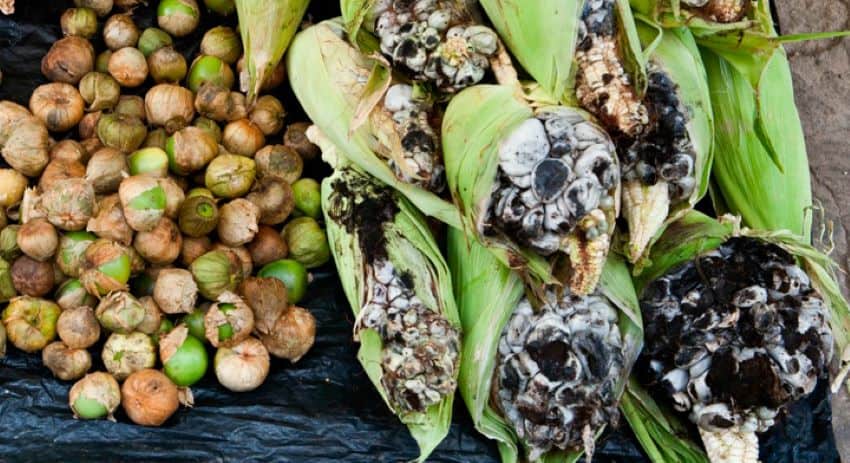
It wasn’t until the 1950s that upscale restaurants began to feature dishes like huitlacoche crepes and chicken in huitlacoche sauce on their menus. These dishes gained popularity for their exotic and intriguing qualities.
Today, huitlacoche is much more accessible and widely consumed, although its popularity remains largely concentrated in central regions of Mexico. Even now, in some rural communities, the appearance of huitlacoche is considered a divine curse. In others, it is ignored, and in some instances, it is consumed more out of necessity than as a culinary treat.
If it’s god’s poo, why are you eating it?
The way we cook huitlacoche — with onions, aromatic herbs and garlic — may be what makes its flavor absolutely delicious and irresistible.
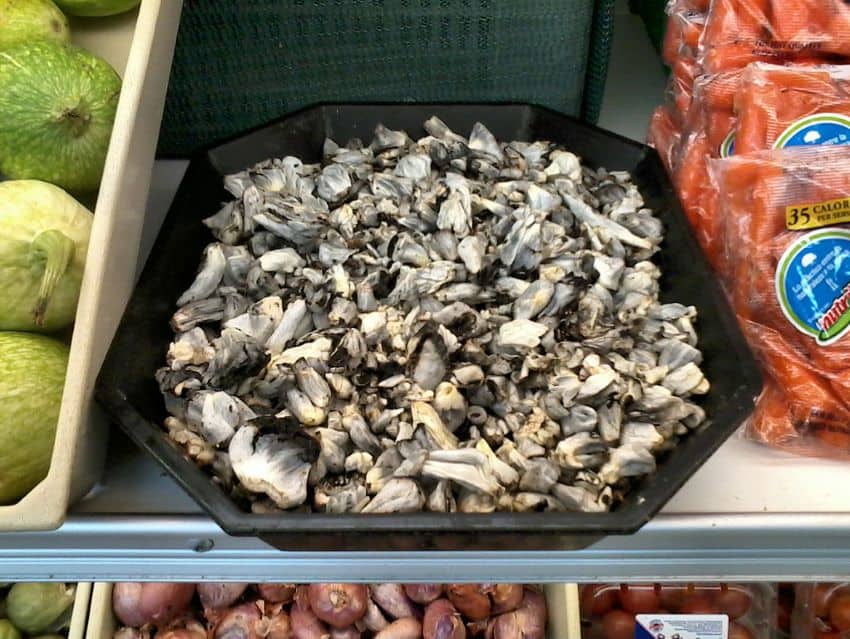
In addition to its great taste, recent studies have shown that huitlacoche offers numerous health benefits due to its high levels of vitamins, minerals, antioxidants and proteins. Fun fact for our vegetarian friends: huitlacoche contains 17% more protein than other mushrooms and has less fat than most of them.
Ways to enjoy the Mexican Truffle
In Durango, Jalisco and Chiapas, huitlacoche is used to make a drink, a type of atole. In central Mexico, where the most experimentation with this fungus occurs, it is consumed in soups, moles, tamales and, of course, tacos and quesadillas.
Interestingly, pairing huitlacoche with nixtamalized corn in tacos and quesadillas maximizes its nutritional benefits. So, if you see huitlacoche or cuitlacoche on the menu at a restaurant, don’t hesitate to try it. The flavor is unique and unlike anything you’ve experienced before.
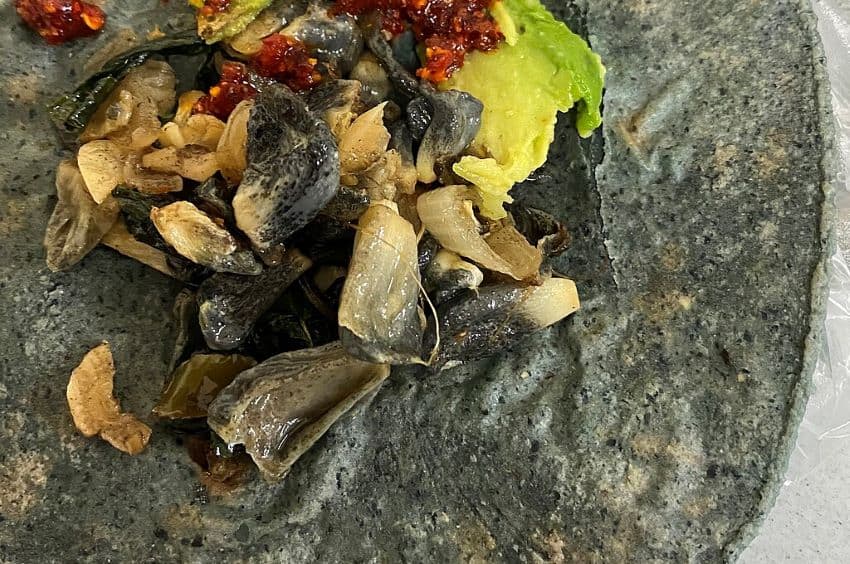
If you’re walking down the street and come across a taco or quesadilla stand offering cuitlacoche, make sure to order a taco. My personal favorite is the quesadilla, which features a homemade long tortilla, Oaxaca cheese and cooked cuitlacoche. That first bite is simply glorious!
Making your own cuitlacoche dishes
Want to prepare cuitlacoche at home? As always, we’ve got you covered! When buying huitlacoche, it’s best to purchase it still on the corn cob. However, if you prefer to skip the hassle, look for pre-packaged trays. If the huitlacoche appears black, dried out, or has black juice surrounding it in the tray, it’s likely not very fresh. Fresh huitlacoche should look grayish and fluffy, almost begging to be squeezed.
View this post on Instagram
To cook the fungus, the simplest and most common method is to sauté garlic and onion in a pan with some oil until they become translucent. Then, add the huitlacoche and cook until it releases some of its juices and aromas. Finally, season with salt to taste and add a few leaves of epazote. Treat huitlacoche like any other mushroom, and you’ll be just fine. Once your huitlacoche is cooked, heat up a tortilla and prepare yourself a taco!
In Chiapas, a southeastern state, I learned that you can enjoy huitlacoche uncooked by making a purée. Simply mash the huitlacoche and add some salt. Once you have your purée, use it to make quesadillas. To a regular tortilla, add cheese and your huitlacoche purée, then cook until the cheese is melted. The flavor is so much more intense and fresh this way.
Have you tried the Mexican truffle? How would you describe its flavor?
María Meléndez is a Mexico City food blogger and influencer.
